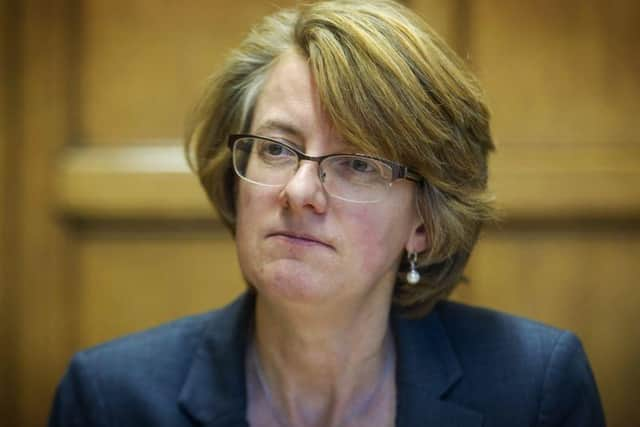Bradford leader says 'don't be conned' as city named second for new infections
Figures published today by Public Health England show the number of cases per 100,000 population carried out in laboratories and the community.
Bradford in West Yorkshire is at 69.4, one behind Leicester - where certain lockdown restrictions have resumed - at 140.2.
Advertisement
Hide AdAdvertisement
Hide AdBarnsley in South Yorkshire is third on the list at 54.7, Rotherham seventh at 33.6 and Kirklees, West Yorkshire, at 30.3.


Councillor Susan Hinchcliffe, Bradford Council Leader, said: “We know that figures from Public Health England show Bradford with a high number of infections along with a number of other northern authorities, although we are some way behind Leicester.
"The number of people testing positive for the virus is still too high and we continue to work hard with all our partners to prevent infection spreading as no one wants a second lockdown.
“As we take more and more steps towards returning to a more normal life, it’s easy to believe that COVID-19 is less of a threat to our health and the health of our family and friends.
Advertisement
Hide AdAdvertisement
Hide Ad"This is simply not the case. We urge all residents to continue to follow the guidelines around staying at home as much as possible, social distancing, washing hands frequently and ensuring that they self-isolate and get tested if they, or anyone in their household, develop any symptoms.
"We must all stay vigilant, we don’t want to see a second spike of cases that inevitably would mean more deaths. Don’t be conned into thinking it’s all OK now, it’s not.”
Health bosses in Doncaster also played down the prospect of any local lockdown measures being imposed in the borough amid reports of a rise in local coronavirus cases.
Doncaster Council said in a statement yesterday that Public Health England "has not raised any concerns" about the number of new Covid-19 cases.
Advertisement
Hide AdAdvertisement
Hide AdPublic Health England data cited previously in the Daily Telegraph said there were 32 new cases reported between June 20 and 26, compared with 11 the previous week.
The same data showed the number of new cases in Wakefield rose from three to six, while York went from zero new cases to one. All other Yorkshire local authority areas saw the number of new cases fall.
However Wakefield Council said these results were from "NHS labs and hospitals and only represents a fraction of the tests undertaken".
It said that a number of news articles were reporting that the district has a higher number of coronavirus cases than other areas and may be at risk of having a local lock-down imposed.
Advertisement
Hide AdAdvertisement
Hide AdThe reports are "based on a very small percentage of testing data available in the public domain and when used in isolation provide a misleading view", said the authority.
Anna Hartley, Wakefield’s Director of Public Health, said: “I would like to reassure residents that coronavirus is not on the rise in the Wakefield district.
“Recent reports are based on Pillar 1 testing, which is done in NHS labs and hospitals and only represents a fraction of the tests undertaken. The majority of testing is done through Pillar 2, often referred to as community testing.
“Wakefield has had a very low number of positive Pillar 2 tests during the last seven days when compared to other similar areas.
Advertisement
Hide AdAdvertisement
Hide Ad“If you combine the data together from all tests, Wakefield’s infection rate is lower than the Yorkshire and Humber average and only very slightly higher than the England average.
“Of course, this picture changes constantly, which is why it is essential that residents remain vigilant, stick to social distancing guidelines, continue to wash their hands regularly, wear a face covering whenever social distancing cannot be observed outside the home, get tested, and self-isolate if displaying symptoms and continue to help control the spread of the virus.”